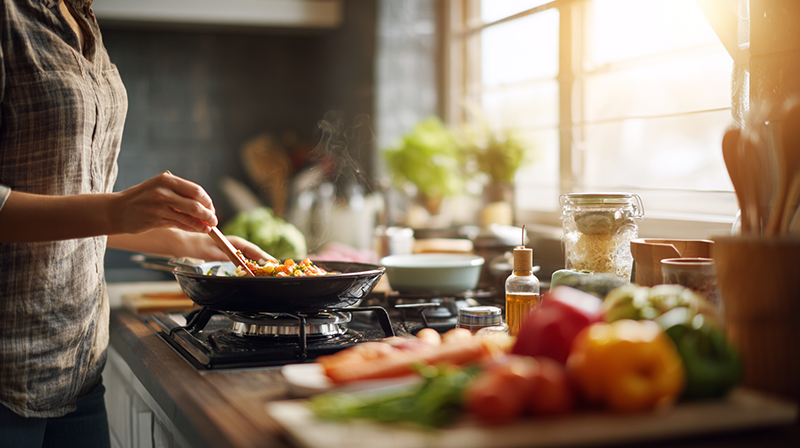The True Cost of Grubhub, DoorDash, and Uber Eats vs. Cooking at Home
- Rex McKee
- Sep 15
- 4 min read

It’s late, you’re tired, and your phone is in your hand. In less than five minutes you could scroll through menus, hit a button, and have dinner on the way. It feels like a lifesaver—Grubhub, DoorDash, Uber Eats, etc all built on convenience. But the question worth asking is this: what is that convenience really costing you?
The truth is, food delivery apps have quietly become one of the biggest drains on household budgets. They don’t just charge for the food—they pile on hidden fees, markups, and service charges that can easily turn a modest meal into a luxury splurge. And when you stack that up against the cost of cooking at home, the difference is shocking.
The Hidden Price of Convenience
When you order through a delivery app, you’re not paying just for dinner—you’re paying for an entire business model built on squeezing extra dollars out of every transaction. Here’s where the money really goes:
Menu markups: Many restaurants raise their menu prices 10–20% higher on delivery apps than what they charge in-store.
Service fees: Small-sounding fees of $2–$4 that appear harmless

Tips: Drivers deserve them, but it’s still another $3–$6 on top.
Surge pricing: If it’s a busy time, some apps raise fees even higher.
What started as a $12 burger quickly becomes $22. Multiply that by a family of four, and dinner that should have cost $40 suddenly hits $80 or more.
Real-Life Comparisons
Let’s break down a few everyday examples:
1. The Burger & Fries
Delivered: $22 per person (after fees and tip).
Homemade: $4–6
per person. A pound of quality ground beef, a bag of potatoes, fresh buns, and toppings will cover four people with leftovers.
2. Pizza Night
Delivered: A large pizza with delivery fees and tip can easily reach $28–30. Add wings or breadsticks and you’re north of $40.
Homemade: A ball of dough, shredded cheese, sauce, and toppings will make a pizza that feeds the whole family for about $10–12. Plus, you can control how much cheese, veggies, or meat goes on it.
3. Chinese Takeout
Delivered: Two entrees, fried rice, and an appetizer often cost $40–50 after fees.
Homemade: A couple of chicken breasts, a bag of rice, frozen veggies, soy sauce, and a few pantry staples = $12–15, and you’ll still have leftovers for lunch the next day.
4. Coffee & Breakfast Sandwich
Delivered: A latte and egg sandwich from your favorite chain costs $14–16 delivered.
Homemade: Fresh eggs, bread, cheese, and coffee at home = less than $3, and you’ve got supplies for the rest of the week.
The Monthly Reality
If you order delivery three nights a week, spending an average of $25 per meal, that’s $75 a week—over $300 a month. A year later, you’ve spent nearly $4,000 just on delivery dinners.
Now imagine putting that same $300 a month into home-cooked meals. With smart grocery shopping, you could stretch it into 30–40 meals for the same cost. That’s not just a small savings—it’s a life-changing difference.
Cooking at Home: More Than Just Savings
The benefits of cooking at home go beyond dollars:
Healthier meals: Delivery food is loaded with hidden salt, sugar, and oils. Cooking at home lets you control every ingredient.
Portion control: Restaurants want you to eat more, because bigger portions feel like “value.” At home, you can make just what you need.
Leftovers that stretch your budget: A pot of chili or a roasted chicken doesn’t just feed you once—it gives you meals for days.
Family connection: Sitting down to a meal you cooked creates memories. Delivery might fill your stomach, but it won’t create traditions.
Why Delivery Feels So Easy
It’s not just laziness—it’s psychology. Delivery apps are designed to feel effortless. Bright colors, tempting photos, one-click ordering—it’s all engineered to bypass your decision-making brain. And when you’re exhausted, the temptation is strong.
But the truth is, the “time saved” is smaller than you think. By the time you wait 40 minutes for a driver to arrive, you could have whipped up tacos, pasta, or stir fry at home in 20.
A Challenge for This Week
Here’s something worth trying:
Track every delivery order this week.
Write down the real cost—fees, tips, everything.
Compare it to the cost of making the same meal at home.
Seeing the numbers in black and white can be eye-opening. Most people don’t realize how much they’re bleeding through delivery apps until they actually write it down.
The Bottom Line
Delivery apps have their place—sometimes life is busy, emergencies happen, or you simply need a break. But when they shift from an occasional convenience to a weekly habit, they can quietly sabotage your budget.
Cooking at home doesn’t just save money—it puts you in control, fuels your health, and stretches your dollars further than you imagined.
The next time you’re tempted to swipe for delivery, ask yourself: is this burger really worth $22, or could I make something better for a third of the price?
Your wallet—and your waistline—will thank you.





Comments